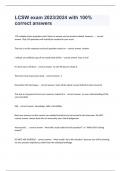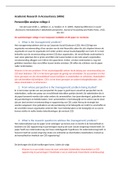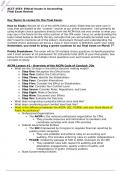Prüfung
LCSW exam 2023/2024 with 100% correct answers
- Kurs
- Hochschule
170 multiple choice questions and 4 hours to answer and no breaks included, however... - correct answer Only 150 questions will actually be counted in your score The test is on the computer and each question needs an - correct answer Answer I will get an unofficial copy of my results that...
[ Mehr anzeigen ]












